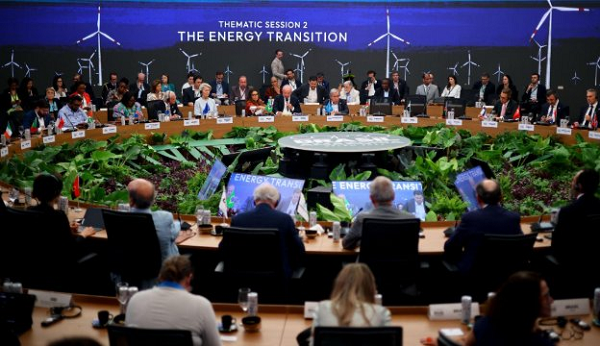
More than 80 countries have just called for a fossil-fuel phase-out roadmap at COP30, yet operational AI for buildings remains absent from climate strategies. Energy experts warn it happens despite scientific and real-world proof that AI doesn’t only waste, but also reduces energy use in certain sectors, such as the building industry.
As COP30, the United Nations climate conference, is almost over, global attention is now centred on fossil-fuel phase-out commitments and the growing energy needs of artificial intelligence and data centers. Yesterday, more than 80 countries have publicly backed a call for a roadmap to end fossil fuels, one of the summit’s most significant political signals to date.
At the same time, AI has emerged as a recurring topic across COP30 side events and technical sessions, with discussions focused on its carbon footprint and its role in modelling climate risks.
Yet energy experts argue that the debate remains incomplete. While policymakers focus on the energy AI consumes, they risk overlooking where AI can cut emissions today – inside the world’s many commercial buildings, experts from Exergio, a company developing tools for energy efficiency in real estate, claim.
The building sector accounts for nearly 30% of global CO₂ emissions and is one of the slowest industries to decarbonise. According to Donatas Karčiauskas, an energy expert and CEO of Exergio, this is precisely where climate negotiators should be looking.
“AI is constantly framed as a new burden. What’s interesting is that the same machine-learning methods that drive energy use in data centres can cut emissions at the point where most electricity is actually consumed, in buildings,” he said..
While governments debate how to regulate AI power consumption, energy specialists argue that AI could already be reducing demand in HVAC systems systems, which are responsible for the largest share of building emissions.
Karčiauskas notes that operational AI is key. It allows buildings to adjust consumption in real time, reducing HVAC output in unused spaces, shifting cooling to off-peak hours, and taking outdoor conditions into consideration. If adopted at scale, these savings can easily outweigh current grid demand of data centres, “turning AI from a net consumer into a net reducer of emissions.”
Company’s work across European and Middle Eastern commercial buildings demonstrates what this looks like in practice. In large commercial buildings where an operational AI system is deployed, HVAC energy use falls by 20-30%. In some use-cases such as shopping malls it also results in delivering savings of more than €1 million at major sites.
Yet despite the clear technical potential and scientific foundation, operational AI remains largely absent from national climate plans. COP30 discussions have highlighted the need to “accelerate implementation” and scale digital and financial tools, but the building sector’s digitalisation gap persists.
“Negotiators are rightly focused on supply-side transitions such as fossil phase-out, renewables, finance,” Karčiauskas said. “But demand-side optimisation is still missing. AI can act as a digital retrofit for buildings, cutting emissions without waiting for new construction or equipment replacement.”
Experts are calling for COP30 outcomes and national follow-up plans to formally recognise AI-driven operational optimisation as a decarbonisation measure. This includes integrating optimisation targets into energy-performance standards and allowing verified software-based savings to qualify for carbon-credit schemes.
“AI will continue to draw electricity, that is inevitable,” Karčiauskas added. “But it can also reduce the demand that forces grids to rely on fossil-fuel backup plants. We don’t have to choose between AI growth and climate goals. If we apply AI where emissions are actually generated, the climate will win.”

















